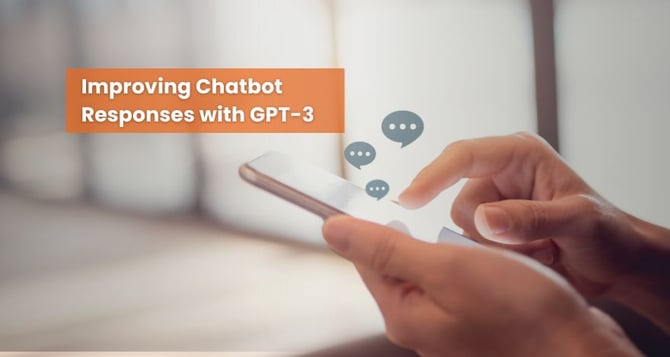Debugging and Improving Chatbot Responses with GPT-3
Unlocking GPT-3's potential, this article navigates challenges in chatbot responses. Learn techniques like post-processing and fine-tuning, ensuring ethical, accurate, and user-friendly interactions.

Chatbots powered by GPT-3 have revolutionized the way businesses interact with their customers online. These intelligent language models, particularly those developed in ChatGPT Development, can understand and generate human-like text, making them a powerful tool for automating customer support, content creation, and various other applications.
However, like any technology, GPT-3-powered chatbots are not perfect and sometimes generate responses that are inaccurate, offensive, or otherwise undesirable.
In this article, we will explore the art of debugging and improving chatbot responses generated by GPT-3.
Understanding the Challenges
Before we delve into the techniques for debugging and improving chatbot responses, it's crucial to understand the challenges associated with GPT-3 and similar language models:
- Lack of Context: GPT-3 generates responses based on the input it receives, but it does not have an understanding of the broader context. This means it can provide inaccurate or nonsensical answers when context is vital.
- Biases: Language models like GPT-3 can inadvertently produce biased or offensive content since they learn from text data available on the internet, which may contain biases.
- Ambiguity: GPT-3 may generate responses that are overly ambiguous or vague, which can frustrate users seeking clear and concise information.
Debugging Chatbot Responses
Debugging chatbot responses involves identifying and rectifying issues in the generated text. Here are some techniques to help you improve the quality of your chatbot's responses:
- Post-processing: After GPT-3 generates a response, you can implement a post-processing step to filter out undesirable content, correct grammar, and ensure the response aligns with your desired tone and style.
- Contextual Prompts: Provide more context in the input prompt to help GPT-3 understand the user's query better. By framing questions more explicitly or specifying the format you expect the answer in, you can guide the model to produce more relevant responses.
- Fine-tuning: Fine-tuning is a process where you train the base GPT-3 model on your specific dataset, making it more aligned with your use case. This can help mitigate issues related to biases and improve response quality.
Improving Chatbot Responses
To enhance the overall quality of chatbot responses, consider these strategies:
- Data Cleaning: Preprocess your training data to remove biased or offensive content. This helps the model learn from cleaner, more representative data, reducing the chances of generating problematic responses.
- Human-in-the-Loop: Implement a human review process where human operators review and approve chatbot responses before they are sent to users. This approach adds an extra layer of quality control.
- Fine-tuning with Feedback: Continuously fine-tune your model based on user feedback. Collect user ratings on chatbot responses and use this feedback to retrain the model, making it more accurate over time.
- Prompt Engineering: Experiment with different input prompts and techniques to guide the model toward desired responses. Iteratively refine your prompts based on the results you obtain.
- Setting Boundaries: Define explicit boundaries for your chatbot, making it clear what topics or types of content it should avoid. This can help prevent the generation of inappropriate or harmful responses.
Ethical Considerations
When debugging and improving chatbot responses, it's essential to consider the ethical implications. Avoiding biases, promoting inclusivity, and safeguarding user privacy should be top priorities.
Additionally, transparency about the use of AI and clear communication with users is crucial for maintaining trust.
Conclusion
GPT-3-powered chatbots offer immense potential for automating and enhancing various aspects of customer interaction. However, they require careful debugging and continuous improvement to provide accurate and desirable responses.
Get Future-Ready AI Solutions for Your Business
Collaborate with us to leverage AI for innovation, efficiency, and sustainable business growth!
By understanding the challenges, implementing quality control measures, and following ethical guidelines, you can harness the power of GPT-3 to create chatbots that deliver exceptional user experiences while minimizing undesirable outcomes.
Debugging and improving chatbot responses is an ongoing process, but the rewards in terms of user satisfaction and operational efficiency are well worth the effort.


%201-1.webp?width=148&height=74&name=our%20work%20(2)%201-1.webp)


.png?width=344&height=101&name=Mask%20group%20(5).png)
















